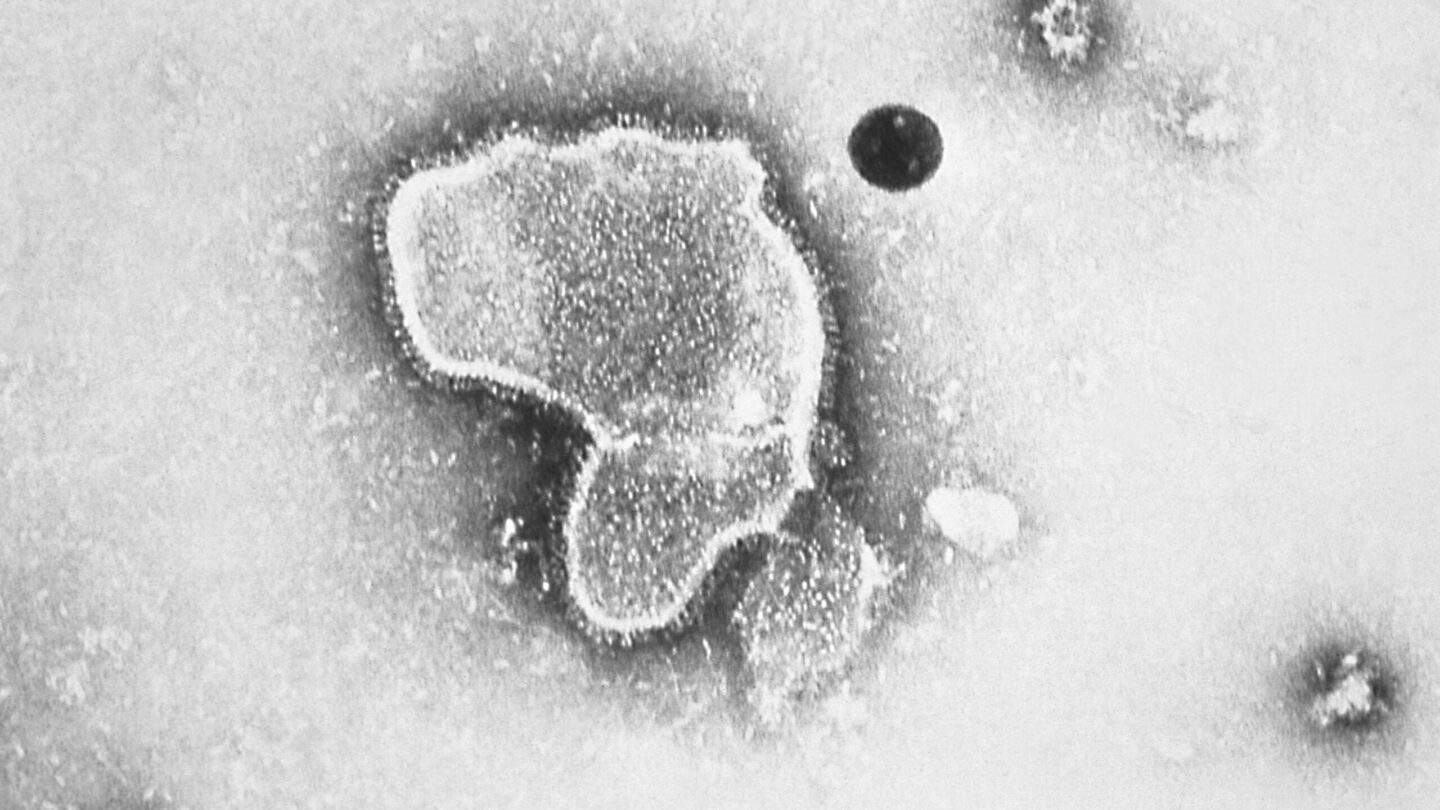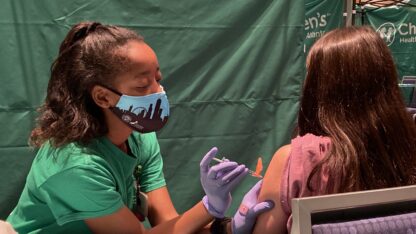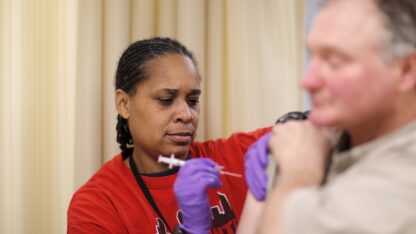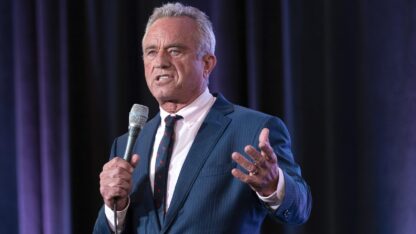Temperatures are dropping and the risk of COVID-19 and influenza are up. And for the last few months, patients with a different malady — respiratory syncytial virus, known as RSV — have been overwhelming hospitals. Public health officials warn that come winter there could be a “tripledemic.”
The unusually high number of RSV infections so early in the year are already pushing hospitals to capacity. In normal years, RSV sends thousands of children to the hospital over fall and winter, but for the second year in a row experts have seen an unprecedented spike in the number of cases beginning during the summer months.
While RSV mostly manifests as a mild illness with cold-like symptoms in adults, it can cause pneumonia and bronchiolitis in very young children. It can be life-threatening in infants and older adults.
But just how concerned should parents be? Here are answers to some of the most common questions about the RSV infection, who is most at risk and what might be causing this year’s outbreak.
Why might RSV be particularly bad this year?
While it may be too early to know for sure, health experts agree that the earlier-than-usual surges are a consequence of the broad lifting of COVID-19 precautions, which served to protect the public from a variety of viruses.
“When the pandemic hit the U.S. in March 2020, we saw the rates of all viruses plummet,” Dr. Vandana Madhavan, director of advanced pediatrics at Mass General Brigham in Boston, told NPR. That was largely due to people staying indoors, wearing masks and frequently washing or sanitizing their hands, she added.
Once restrictions began to be loosened in the spring of 2021, health experts began seeing odd patterns of circulation of these respiratory viruses. This year, the return to pre-COVID social activities and interactions, travel and in-class teaching has led to another dangerous spike, Madhavan explained.
There’s something else going on, she added. Very young children born just before or during the pandemic did not benefit from regular or early exposure to common viruses, including RSV, which would have helped build up an immunity.
“We’ve had this whole cohort of young children who haven’t had that usual constant exposure to viruses at daycare or in preschool or out in the community. And so now they’re getting exposed and it’s hitting them really hard,” Madhavan said.
Those conditions have led to what some doctors are calling an unprecedented number of infants and children in emergency rooms and pediatric intensive care units across the country.
“My hope is that this is not the new normal,” Madhavan said on Friday. “But for this year, it is concerning because it’s still only late October and we don’t know what we’re going to see as we head deeper into fall and especially this winter.”
Why are infants and young children the most vulnerable to respiratory viruses?
Nearly all children get an RSV infection by the time they are 2 years old, according to the Centers for Disease Control and Prevention. In most cases, it will cause mild, cold-like symptoms, much as it does in the vast majority of healthy adults. But it can also cause severe bronchitis or pneumonia in very young children, particularly infants and those under the age of 5.
The problem is that their small lungs and muscles can’t muster up the power to cough up or sneeze out the increased secretions and mucus caused in their airways.
“They have a hard time getting out that excess fluid and that’s why they have trouble breathing which then that leads to problems eating and drinking,” Madhavan said.
RSV treatments in such cases can include oxygen support, suctioning, and IV fluids.
According to the CDC’s data, each year approximately 58,000 children under 5 are hospitalized for RSV. The next most vulnerable group are adults over 65, in whom the infection causes 14,000 deaths a year.
What precautions can you take to avoid RSV?
Health officials say handwashing, staying hydrated, keeping hands away from the face and disinfecting surfaces help to stave off RSV or keep it from becoming a serious illness.
But for those with newborns or kids under one, Madhavan said the best thing to do is to keep children away from adults who have been recently sick.
She suggested not being shy about grilling others about how they’ve been feeling. “A lot of the time when people ask that question, the person on the other end really only thinks to mention anything if they’ve been really sick, so they don’t think to mention if they’ve had a minor cold.” But that could become a serious case of RSV for an infant or a toddler, she added.
Madhavan said the effective way for children and adults to try to stay healthy throughout the remaining fall and winter months, is to get updated COVID booster and influenza vaccines.
Anyone over six months old can get the flu vaccine. Madhavan noted that it takes a couple of weeks for the shot’s full protection to take effect. “If a child is under eight and has never gotten influenza vaccine before, they need two doses one month apart before getting full protection two weeks after that second dose,” she added.
The COVID bivalent boosters for people 5 and older became available in September. And children over six months can get any of the three available COVID-19 vaccines. “Don’t wait until we’re in the middle of another COVID wave to get the booster,” Madhavan warns.
Is there an RSV vaccine?
There is no RSV vaccine yet, although there are many in development.
There is, however, a treatment called palivizumab that is available to high-risk infants. It is an injection that can be given to premies and other babies born with certain lung or heart conditions who are at high risk for severe RSV disease. It is administered once a month throughout the RSV season.
“It is not a vaccine in that it doesn’t help the immune system make longer-term immune protection, but it keeps giving antibody against RSV every month during those high-risk periods for those high-risk children to give them additional protection,” Madhavan explained.
Still, Madhavan stressed, palivizumab is not routinely given to all children. Part of that is due to the possible, more serious side effects associated with the drug, which include swelling of the throat, difficult or rapid breathing, muscle weakness and unresponsiveness.
When to seek emergency care?
Hospitals, emergency rooms and pediatric ICUs across the country have been teeming with RSV patients for weeks now. So it’s important to know when to head for the ER and when it might be a better, healthier idea to stay home, Madhavan said.
She strongly discourages people from heading to the ER to get tested for RSV or other respiratory viruses.
“If you think you or your child has it, it’s best to pick up the phone and call your doctor or nurse rather than coming into a setting that might mean a long wait or might mean exposure to other viruses that your child and family don’t have and can have risks on their own,” she said.
Madhavan said that in most cases, health care professionals can go through a checklist of warning signs and make suggestions for potential at-home treatments.
“Based on that information they can recommend that you start doing nasal saline drops, use a humidifier or shower, or do other things to help loosen up mucus and decrease congestion,” she said. “If it’s a child older than one, they may say try honey to help with a cough or give suggestions on how to bring down a fever.”
But, Madhavan warns, it may be time to seek more intensive care when an infant or young child is working extra hard to breath. That includes a flaring of the nostrils, grunting as they inhale and exhale, or the skin between or below the ribs or collarbone pulls in and out.
Copyright 2022 NPR. To see more, visit https://www.npr.org.
9(MDAxODM0MDY4MDEyMTY4NDA3MzI3YjkzMw004))

9(MDAxODM0MDY4MDEyMTY4NDA3MzI3YjkzMw004))








